The Essential Guide to Visiting Banff National Park
Banff National Park of the Canadian Rocky Mountains is an iconic destination, a true natural wonder that will leave you breathless with its stunning landscapes, scenic lakes, and abundant wildlife. Established in 1885, it was the first national park in Canada and the third in the world. Since then, it has become a must-visit destination for anyone who loves the great outdoors.
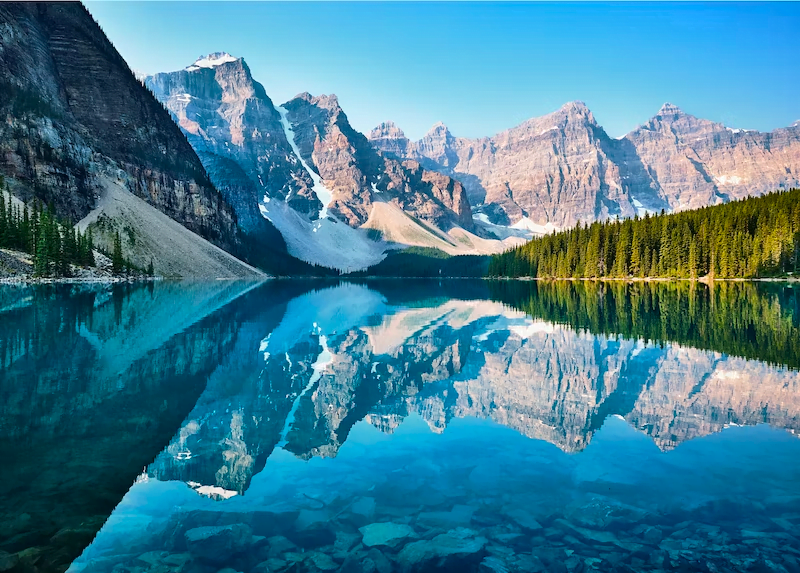
Located in the province of Alberta, the park is taken care of by Parks Canada and covers more than 6,641 square kilometers (2,564 square miles), and encompasses some of the most awe-inspiring landscapes in the country. The park’s main hub is the town of Banff, which is nestled in the heart of the Rockies and surrounded by towering peaks, ancient glaciers, and alpine meadows. The highest point of the park is at Mt Forbes. The peak reaches 11,851 ft.
For outdoor enthusiasts, this Parks scenery is a true paradise. Hiking is one of the most popular activities in the park, with trails ranging from leisurely strolls to challenging multi-day hikes. The park has over 1,600 kilometers (1,000 miles) of trails to explore, so there is always a new adventure around the corner.
Get ready to explore Canada’s first National Park.
Planning Your Trip
Banff, Canada is a popular destination and can get crowded, especially during peak season, which is typically between June and August. Book your accommodations and activities in advance to avoid disappointment. The park is beautiful year-round, and visiting during the shoulder season can mean fewer crowds and more affordable prices. Check out the Parks Canada website here to learn more about visiting.
Accommodations
- Fairmont Banff Springs is an iconic castle-like hotel. This is the place to stay if you want the ultimate luxury experience. The Banff Springs Hotel is a majestic castle-like hotel built in 1888 and is one of the most iconic landmarks in the park. The hotel is famous for its luxurious amenities and stunning views of the Rockies. It has hosted many famous guests, including Marilyn Monroe, Winston Churchill, and Queen Elizabeth II. This will be the best place to relax in between outdoor adventures. Make sure you check out the indoor pool!
- Moose Hotel & Suites is another luxury hotel option.
- Camping will provide you with the best views and nature immersion. Read this article to learn all about camping at Banff.
Packing for the Rocky Mountains
The weather in Banff can be unpredictable, so make sure to pack clothing for all seasons. Parks Canada deserves a high-five for their great job maintaining the nature and wildlife of this amazing natural wonder. Even in the summer, temperatures can drop at night, so bring warm layers. Also, don’t forget to pack comfortable walking shoes, sunscreen, and insect repellent for the mountain pine beetles. One of my favorite national parks clothing items is convertible hiking pants.
Wildlife Tips
One of the most fascinating aspects of Banff is its abundant wildlife. The park has various animals, including elk, deer, bighorn sheep, mountain goats, grizzly bears, black bears, and wolves. Visitors can take guided tours or explore the park on their own to see these majestic creatures up close, but it is essential to remember to keep a safe distance and respect the animals’ space. The park also has several wildlife hotspots, such as the Bow Valley Parkway and the Icefields Parkway, where visitors will likely see animals grazing or roaming in their natural habitats.
Respect the wildlife. Banff National Park has many wild animals, including grizzly bears, elk, and moose. Make sure to keep a safe distance from wildlife and never approach them. Feeding wildlife is strictly prohibited. Be bear aware. If you’re hiking in Banff, it’s important to be bear-aware. Carry bear spray with you always and make noise to avoid surprising bears. Also, make sure to check trail closures and warnings before heading out.
Stay on the trails. Banff has a vast network of hiking trails, but it’s important to stay on designated trails to avoid damaging fragile ecosystems. Ensure to follow Leave No Trace principles and pack out all your garbage.

Activities at Banff
Banff, Canada offers a perfect mix of recreation and relaxation. Visitors can enjoy the park’s natural beauty while engaging in their favorite outdoor activities. Join park officials on guided tours or private companies on outdoor adventures. The park is also home to numerous spas and springs, where visitors can unwind and relax after a day of adventure.
Cave and Basin Historical Site

Cave and Basin National Historic Site is a unique attraction in Banff. It is a must-visit for those interested in the parks history and its role in creating Canada’s national park system.
The Cave and Basin site is the birthplace of Banff. In 1883, three railway workers discovered the springs that would eventually lead to the parks creation. The site was later developed as a commercial spa and attracted visitors from around the world. It was designated as a national historic site in 1981.
Today, visitors to the site can explore the underground cave and basin where the parks hot springs were first discovered. The cave is lit with colorful lights and has a mystical feel. The basin is a shallow pool of thermal water visitors can dip their hands into. The site also features interpretive exhibits, videos, and artifacts that tell the story of the springs and those who came to enjoy them.

Banff Lake Cruise
Banff Lake Cruise is a popular activity in Banff National Park that offers visitors a unique way to experience the park’s stunning beauty. The cruise takes place on Lake Minnewanka, the largest lake in Banff National Park and just a short drive from Banff town.
The Lake Minnewanka Cruise is a guided boat tour that takes visitors on a scenic journey through the heart of the Canadian Rockies. The tour starts at the Lake Minnewanka dock, where visitors board the boat and set off on a 60-minute cruise. Along the way, visitors are treated to breathtaking views of the lake’s crystal-clear waters and the surrounding mountain peaks.
One of the highlights of the Lake Minnewanka Cruise is Devil’s Gap, a narrow gorge on the lake that offers spectacular views of the surrounding mountains. Visitors can also see the remains of an old coal mining town that was located near the lake in the early 1900s.
The Lake Minnewanka Cruise operates from May to October, and tickets can be purchased at the Lake Minnewanka dock or online in advance. The cruise is suitable for all ages, and children under six can ride for free. The boat is equipped with washrooms, indoor and outdoor seating, and a small snack bar.

Leave mountain footprints, Hiking
Over 1,000 miles of trails crisscross in Banff. The most interesting way of experiencing this region is by capturing the spirit of the mountain. Hiking is available in the locality and farther away from everyone. First, follow the trail from downtown Banff to Tunnel Mountain—the smallest officially-created peak in the national park—for a panoramic view of the valley. Another option includes the Lakeshore Trail to Stewart Canyon on the Lake Minnewanka Trail close to Banff as well as a tree-lined path through Lake Louise and the historic (and currently running) Lake Agnes Teahouse.
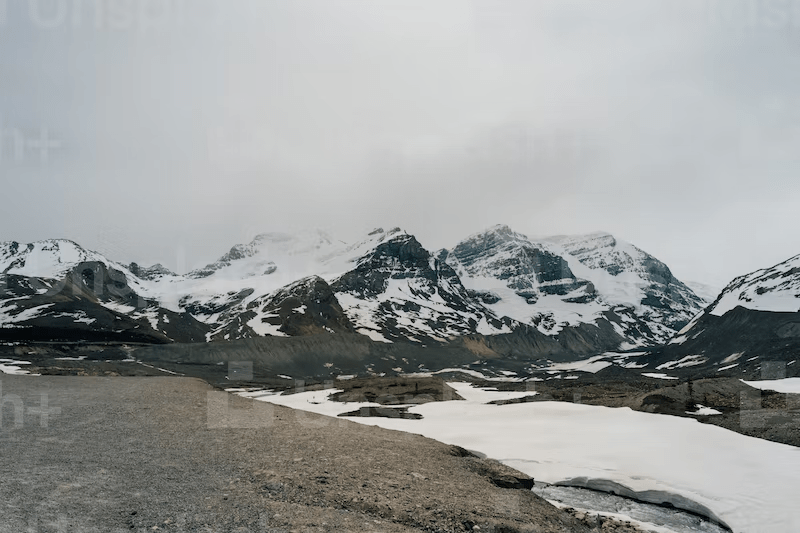
Banff Upper Hot Springs
The Banff Upper Hot Springs is a natural hot spring attraction in Banff National Park. The hot springs have been a popular destination for over a century and are known for their therapeutic properties and stunning mountain views.
The Banff Upper Hot Springs are located just a few minutes’ drive from Banff and offer visitors a unique opportunity to relax in the warm, mineral-rich waters of the springs while taking in the stunning mountain scenery. The water temperature of the springs is maintained at around 38-40 degrees Celsius (100-104 degrees Fahrenheit), making it a comfortable and relaxing temperature to soak in.

The site features a modern facility with change rooms, lockers, showers, and a gift shop. There are also lounge chairs on the pool deck where visitors can relax and enjoy the view.
The springs are a great way to unwind after a long day of hiking or skiing; they also offer therapeutic benefits for various ailments, such as arthritis, muscle pain, and stress relief. The water in the springs is naturally high in minerals, including calcium, magnesium, and sulfate, which are believed to have healing properties.
The Banff Upper Hot Springs are open year-round, and visitors can enjoy the hot springs in any season. The hot springs are particularly popular in the winter, as they offer a unique experience of soaking in hot water surrounded by snow-capped peaks.
Overall, the Banff Upper Hot Springs is a must-visit attraction in Banff National Park, offering visitors a unique opportunity to relax, unwind, and take in the natural beauty of the Canadian Rockies.
Glacier Adventure

Want to walk the glaciers? The glacier hike will take about 90 minutes from Banff to Columbia Icefields on Icefields Parkway. Take the shuttle to Icefield Parkway and then to Glacier. Athabasca glaciers are amazing for seeing the cold and frozen lake and fresh glaciation water. This ride on a gigantic ice explorer was also quite interesting. The scores were 32.8%. Ultimate Explorer Pass is the ideal choice if your plans include taking a trip to Glaciers, skywalks, riding gondolas, and taking a lake cruise.
Banff Gondola
Take a break from the cold or the heat and relax inside an enclosed ski lift that will take you through the park in the Banff Gondola. This is a family-friendly way to explore the very top of the most scenic views Banff offers. Check out the Gondola website here to learn about ticket prices.
Banff Connect LA
Connect Banff is an annual technology and innovation conference that takes place in Banff, Alberta, Canada. Banff Connect brings together a diverse group of entrepreneurs, investors, and thought leaders to discuss the latest trends and developments in technology, business, and society.
The conference features a variety of keynote speakers, panel discussions, and networking events, allowing attendees to learn from and connect with industry experts and like-minded professionals. Banff Connect is designed to inspire innovation and collaboration, and it aims to help attendees gain valuable insights and connections that can help them succeed in their respective fields.

Lake Louise
One of the park’s most famous and beloved destinations is Lake Louise, known for its turquoise-blue waters, glacier-carved peaks, and verdant forests. Visitors can explore the lake on foot, by bike, or by renting a canoe or kayak. The lake is also surrounded by a network of hiking trails, such as the Lake Agnes Tea House hike, which offers panoramic views of the lake and its surroundings. The hike up to the tea house is a moderate challenge, with a well-maintained trail that ascends through dense forest to an elevation of 2,135 meters (7,005 feet).
Moraine Lake
Another highlight of the park is Moraine Lake, which is famous for its intense turquoise color caused by the refraction of light on the rock flour suspended in the water. The Moraine Lake area is surrounded by a stunning panorama of mountain peaks, including the Valley of the Ten Peaks. The hiking trails around Moraine Lake are some of the most popular in the park, offering stunning vistas and incredible photo opportunities. The Larch Valley hike is a particularly popular route, which takes you through dense forests and up to an alpine meadow full of larch trees in the fall, creating a golden carpet across the landscape.
Peyto Lake
Peyto lake is another iconic lake. If you already have a full itinerary with awesome hikes, you can stop here at the Peyto Lake lookout. Just a short walk from a parking lot, you will be looking at the most beautiful view in the park.

Rock Climbing
For those seeking a more thrilling experience, there are plenty of opportunities for rock climbing, mountain biking, and water sports such as rafting and kayaking. The park also has several ski resorts, such as Lake Louise Ski Resort and Mount Norquay, which offer world-class skiing and snowboarding in the winter months. The skiing season in Banff typically runs from November to May, with plenty of fresh powder and bluebird days to enjoy.

Local Culture
For those interested in the local culture, downtown Banff offers plenty of opportunities to learn about the history and traditions of the Indigenous people who have lived there for thousands of years. The town offers Buffalo Nations Museum and the Whyte Museum of the Canadian Rockies offer fascinating exhibits that showcase the art, culture, and traditions of the First Nations communities in the area.
Banff town has a rich history and culture. Indigenous peoples for thousands of years have inhabited the area and is home to many historical sites and museums that tell the story of the area’s past. Visitors can also learn about the indigenous culture and heritage through various cultural centers and guided tours.
Another place you can explore is downtown Calgary just a short drive east of the park. Calgary is a major city in Alberta and would be a great day trip during your stay in. Another local site to check out is Jasper national park.
FAQ
How many days do you need for Banff?

The amount of time you need to fully experience Banff National Park depends on your interests and the activities you want to do. However, a minimum of three to four days is recommended to get a good sense of the park’s highlights and see some of its most iconic sites.
During this time, you can explore some of the park’s most popular destinations, such as Lake Louise, Moraine Lake, and Johnston Canyon. You can also take a scenic drive along the Icefields Parkway, which offers breathtaking views of the Rockies and several stunning glaciers.
If you’re an outdoor enthusiast and enjoy hiking, you may want to add a few more days to your trip. With over 1,600 kilometers (1,000 miles) of trails to explore, Banff National Park is a hiker’s paradise. You can spend several days hiking through the park’s many trails, such as the Plain of Six Glaciers Trail or the Larch Valley hikes.
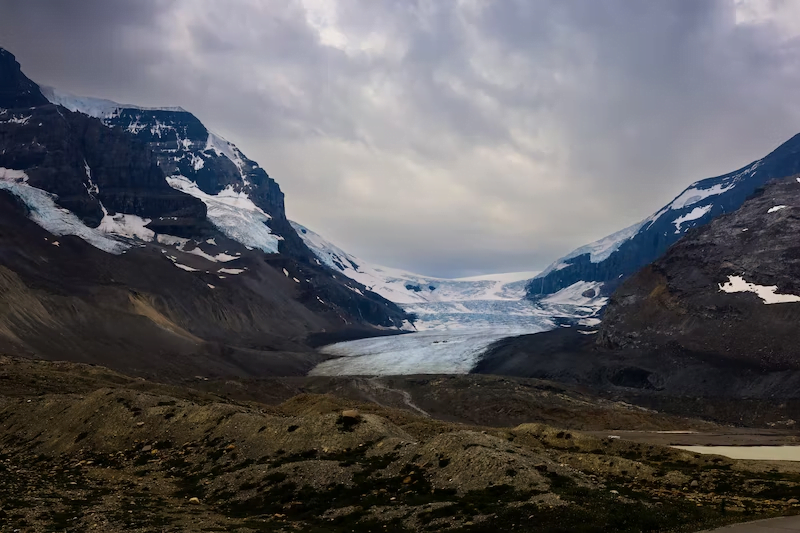
If you’re interested in winter sports, such as skiing or snowboarding, plan your trip during the winter months. Banff National Park has several ski resorts, such as Lake Louise Ski Resort and Mount Norquay, that offer world-class skiing and snowboarding. The skiing season in Banff typically runs from November to May, so you’ll need to plan your trip accordingly.
In summary, three to four days is a good starting point to experience the highlights of Banff National Park. However, if you have more time, you can easily spend a week exploring the park’s many wonders and engaging in outdoor activities.
How much does it cost to go to Banff?
Banff Canada is monitored by parks Canada, and Banff National Park will require a park pass. The funds earned from the purchase of passes help preserve the park. For $10/per adult or $20 per pp/family per day. This is an inexpensive way to gain access to Canadian parks. Passes can also be purchased from the park gates and visitor center, but we suggest obtaining these online.
Is Banff, Canada, worth visiting?

Yes, Banff National Park is definitely worth visiting for anyone looking to experience the natural beauty of the Canadian Mountains. The park offers a range of outdoor activities, such as hiking, skiing, and wildlife watching, as well as unique attractions like the Banff Lake Cruise.
One of the main reasons that Banff is such a popular destination is the stunning natural scenery. The park is home to towering mountain peaks, crystal-clear lakes, and dramatic glaciers, offering endless opportunities for sightseeing and outdoor adventures. The park is also home to a wide variety of wildlife, including elk, bighorn sheep, bears, and many other species.
Aside from the natural beauty, Banff also has a vibrant town that offers a range of accommodation, dining, and shopping options. The town of banff is home to a range of restaurants, cafes, boutique shops, and galleries. The town is also a great place to learn about the history and culture of the area, with museums and cultural centers that highlight the region’s indigenous heritage.
Overall, Banff National Park is a must-visit destination for anyone looking to experience the natural beauty of the Rockies. With its stunning scenery, range of outdoor activities, and unique attractions, it’s a place that visitors will remember for a lifetime. Whether you’re looking for adventure, relaxation, or a bit of both, Banff has something to offer everyone.
Do I need a passport to go to Banff Canada?

What are your requirements regarding travel to Banff? A passport is required to cross borders in the United States and Canada. Rocky Mountains Premium Tours (35 seats) (137.88 USD). Cover wagon rides to Banff with Western cooking (From 108.42 dollars) One-hour river spray ride from $77.30 to $77.33. Banff’s Big Canoe Tour (Around $33.34) Horse-drawn sleigh riding at Banff (About $32.72).
Why is Banff so famous?
Banff National Park is famous for its breathtaking natural beauty and diverse outdoor activities. The park is known for its rugged mountain peaks, turquoise lakes, and abundant wildlife. A perfect example of what makes Banff so famous is the Lake Minnewanka Loop.
The park is home to many iconic sites, such as Lake Louise, Moraine Lake, and the Icefields Parkway, which offer stunning views of the Rockies and are popular destinations for visitors worldwide. The park also has over 1,600 kilometers (1,000 miles) of hiking trails, which attract outdoor enthusiasts who want to explore the park’s backcountry.
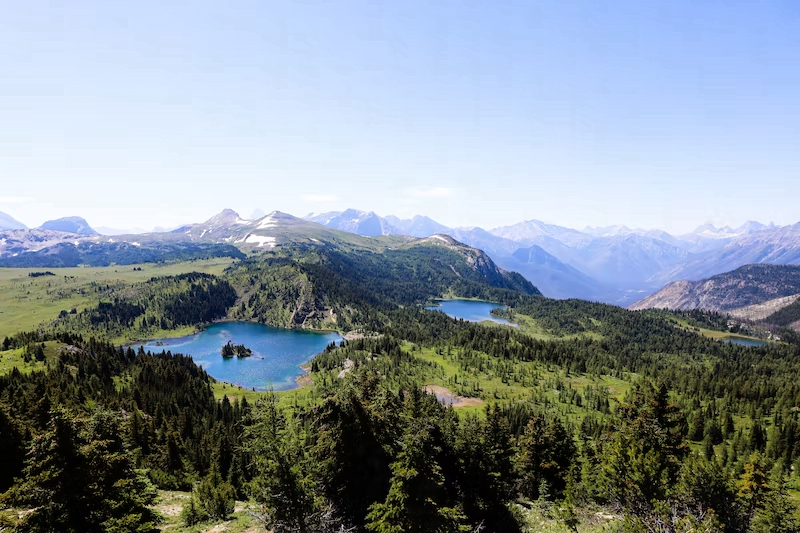
In addition to its natural beauty, this National Park is rich in history and culture. The park has several historic sites, such as the Banff Springs Hotel and the Banff Park Museum, which offer insights into the area’s past. The park is also home to several First Nations communities, who have lived in the area for thousands of years and have a rich cultural heritage.
Banff National Park’s popularity has led to it becoming a top tourist destination in Canada, attracting millions of visitors each year. Its stunning scenery and range of activities make it a must-visit for anyone who loves the outdoors and wants to experience the beauty of the Canadian Rockies.
The Continental Divide
The Continental Divide is a natural boundary in North America that separates the watersheds of the Pacific Ocean and Atlantic oceans’ watersheds. In Banff, Canada, the Divide runs along the sedimentary rocks of the Rocky Mountains crest, forming the eastern boundary of Banff National Park.
The Divide on the eastern side can be seen from several popular viewpoints and hiking trails. One of the most well-known viewpoints is the Columbia Icefield, which is located approximately 100 km north of the city site on the Icefields Parkway. At the Columbia Icefield, visitors can see the Athabasca Glacier and the Saskatchewan Glacier, both of which are fed by snow and ice from the Continental Divide.
Hiking trails that cross the Divide are also popular in Banff National Park. One of the most popular trails is the Plain of Six Glaciers Trail, which starts from the Lake Louise area and offers stunning views of glaciers and mountains as it crosses the Divide. Another popular trail is the Iceline Trail, which starts from the Takakkaw Falls parking lot in Yoho National Park, just across the border from Banff National Park, and crosses the Divide.
How High Above Sea Level is Banff?
The park is located in the Canadian Rockies and is known for its mountainous terrain and high elevations. The town of Banff is located at an elevation of approximately 1,383 meters (4,537 feet) above sea level.
What is the best month to visit Banff?

The best month to visit Banff National Park depends on what you want to do and see during your visit. Banff is open year-round destination, with each season offering a unique experience.
Summer
Summer (June to August) is the most popular time to visit Banff, as the weather is warm and sunny, and all the hiking trails and attractions are open. It is the best time for outdoor activities such as hiking, mountain biking, and water sports. The downside to visiting during summer is that the park can be very crowded, and summer accommodations can be expensive.
Fall
Fall (September to November) is a beautiful time to visit Banff, as the leaves on the trees turn golden and the crowds start to thin out. The weather is cool and crisp, making it an excellent time for hiking and sightseeing. The park also offers beautiful fall foliage, and wildlife such as elk, bighorn sheep, and bears are more active during this time.
Winter
Winter Wonderland (December to February) is an excellent time for winter sports enthusiasts to visit Banff. The park offers world-class skiing, snowboarding, snowshoeing, ice skating, and dog sledding. The park is also beautifully blanketed in snow, and visitors can take in the stunning winter scenery. If you plan to go during winter, check out Sunshine Village. Sunshine village offers accommodations, skiing, dining options, and more. If you have never skied before, take a look at their ski lessons.
Spring
Spring (March to May) is a great time to visit Banff for those who want to avoid the crowds but enjoy mild weather. The park is less crowded during this time, and the weather starts to warm up. The snow starts to melt, and the waterfalls and rivers are at their peak flow. A park is also a great place for wildlife watching during the spring months. It will not be as warm as summer, but you will miss the peak season crowds.


Conclusion
In conclusion, Banff, Canada’s first National Park, is a natural wonder that is not to be missed and should be added to your summer destinations bucketlist. Its stunning landscapes, abundant wildlife, and rich history and culture offer something for everyone, from casual sightseers to experienced adventurers. If you have extra time, check out the eastern boundary of Banff, the Kootenay National Park or Jasper national park. Whether you’re hiking in the mountains, paddling on a lake, or simply soaking up the beauty of the Rockies, Banff National Park is an experience that will stay with you for a lifetime.
Share Now

Title: How to Master a Road Trip with a Toddler: Essential Tips and Hacks
Title: How to Master a Road Trip with a Toddler: Essential Tips and Hacks Road trips are a fantastic way to create lasting memories and
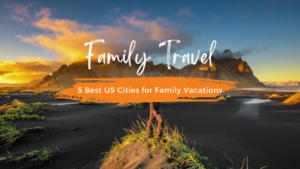
The 5 Best Cities in the USA to Visit with Families
The 5 Best Cities in the USA to Visit with Families When it comes to planning a vacation with the whole family, finding the perfect
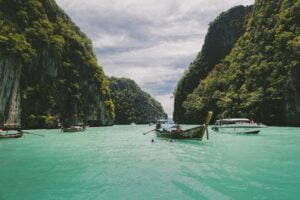
Navigating Thailand: Train, Flight, or Car Rental?
Navigating Thailand: Train, Flight, or Car Rental? Thailand, with its stunning landscapes, vibrant culture, and rich heritage, has become a dream destination for travelers
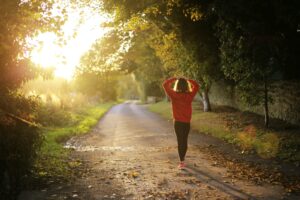
130 hour rule
Why you need to know the number 130 if you are working towards a fitness goal Have you ever started a fitness program and

How to pack for any trip like a minimalist
How to pack for any trip like a minimalist No matter how long or short the trip, this is what and how I pack.

10 Places in the World Where Luxury Sports Car Dreams Come True
10 Places in the World Where your dream to drive a Luxury Sports Car Can Come True Driving a luxury sports car is the ultimate


